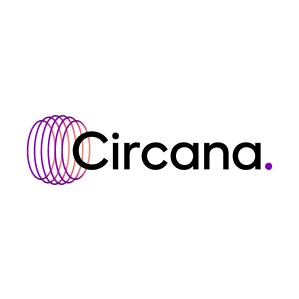- Circana

- Aug 17, 2022
- 3 min read
Updated: Sep 13, 2024
Chicago, August 17, 2022 — Historically, the spending gap between higher- and lower-income households is more pronounced in times of high inflation. With food inflation at a 40-year high, the gap has widened again, and lower-income households are shifting their at- and away-from-home eating behaviors to stretch their food dollars. Eating more frozen and shelf-stable foods, using less expensive and private label brands, and cutting back on restaurant visits, are among the ways lower-income households are managing their food spending, reports The NPD Group, which recently merged with Information Resources, Inc. (IRI) to create a leading global technology, analytics, and data provider.
At-Home Eating Behaviors
According to NPD, lower-income households under $75K eat 89% of their meals and snacks at home. These households eat more frozen foods, like frozen pot pies or breakfast sandwiches, and shelf-stable foods, like canned pasta or ramen noodles, than on average. Single-serve frozen meals are a top growing at-home food for lower-income consumers, and these households eat 100% more canned pasta than average.
While lower-income consumers over-index in their consumption of frozen and shelf-stable foods, they under-index when eating fresh and more healthful foods. Forty percent of adults in households under $75K reported to NPD that the cost of more healthful foods and beverages is a barrier to eating healthier. For example, IRI reports that in July, compared to a year ago, prices for refrigerated eggs rose 46.8% and fresh citrus fruit by 26.7%.
Lower-income households also stretch food dollars by buying less expensive or private label store brands. In the quarter ending June, lower-income households used private label foods 26% more than higher-income households. Nearly 50% of lower-income families say they will purchase more private label and less expensive brands compared to a year ago. IRI reports that private label continues to grow in many categories. In the four weeks ending July 24, 2022, private label share grew most in the fresh eggs (up 6 percentage points), sugar (up 5 percentage points), sour cream (up 4 percentage points), shortening, and oil (up 3 percentage points), butter/butter blends (up 3 percentage points), flour (up 2 percentage points), frozen meat (up 2 percentage points), and bottled water (up 4 percentage points) categories.
Restaurant and Foodservice Use
During the first two years of the pandemic, per capita restaurant visits declined across all income groups; however, in the quarter ending June this year, visits declines were most pronounced in income groups under $75K. Under $45K households with kids cut back five visits per person in the quarter, driving the overall 2% decline in total restaurant visits in the quarter. These households decreased visits across all restaurant segments, quick service, full service, and retail foodservice outlets.
In addition to a decrease in visit frequency among lower-income households with kids, some have cut out foodservice entirely. Over one in four families with incomes under $45K reported not visiting a restaurant due to budget, substantially above other groups. Restaurant purchase frequency of these households declined by 6% in the quarter ending June compared to a year ago.
“High food prices affect all consumers, particularly lower-income households,” says David Portalatin, NPD Food Industry Advisor and author of Eating Patterns in America. “Our research shows that households with incomes under $75K represent 46% of the U.S. population. These households are a critical demographic for food manufacturers, grocers, and foodservice operators to understand how these households manage their food spending today.”

























